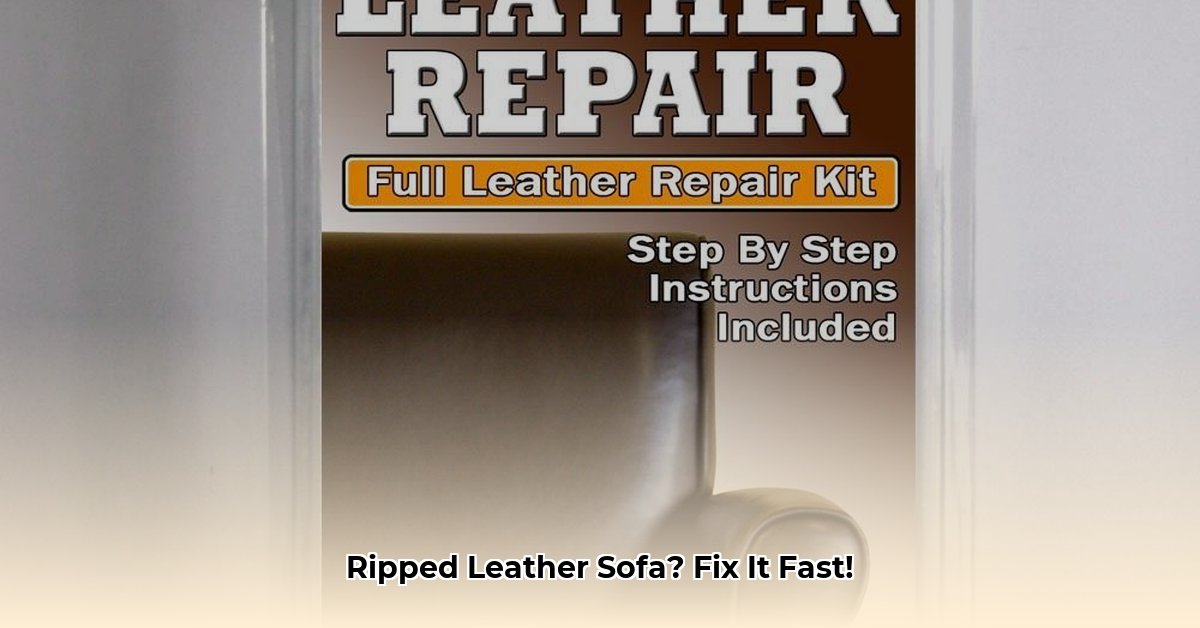Leather furniture adds a touch of class to any home, but accidents happen. Whether it’s a pet’s playful scratch, a moving day mishap, or simply the wear and tear of time, damage can diminish your sofa’s beauty and value. But don’t despair! This comprehensive guide will empower you to restore your leather sofa’s former glory with the help of a leather repair kit. We’ll walk you through every step, from identifying the damage and choosing the right kit to executing the repair and maintaining your sofa’s health for years to come.
Understanding Leather Damage
Before diving into repairs, it’s essential to diagnose the specific type of damage. This will guide your choice of repair kit and technique.
- Scratches: Superficial abrasions affecting the leather’s top layer. These are generally easy to address with fillers or colorants.
- Tears: More serious ruptures in the leather, requiring patching or more advanced repair techniques.
- Burns: Scorch marks caused by heat, often requiring specialized treatment to minimize their appearance.
- Discoloration: Fading, patching, or uneven coloring often caused by sun exposure, spills, or aging. Colorants and restorers can help address this.
- Cracking: Resembling dry skin, cracking indicates a lack of moisture and requires conditioning treatment.
- Staining: Deeply embedded discoloration caused by liquids, necessitating specialized cleaning agents or stain removers.
Know Your Leather, Choose Your Kit
Leather isn’t a one-size-fits-all material. Identifying the specific type of leather on your sofa is crucial for selecting a compatible repair kit.
- Genuine Leather: Encompasses various types like full-grain, top-grain, and corrected grain. Most repair kits are designed for genuine leather, offering a wide range of repair options.
- Faux Leather (PU Leather/Bonded Leather): Synthetic materials designed to mimic the look and feel of genuine leather. Require kits specifically formulated for synthetics, as harsh chemicals can cause damage.
- Vinyl: Another synthetic material, typically more resistant to damage than faux leather. Choose kits designed for vinyl to avoid adverse reactions.
- Bicast/Bonded Leather: A combination of genuine leather scraps and polyurethane, requiring specialized kits that address the unique properties of this material.
Selecting the Ideal Leather Repair Kit
Navigating the vast market of leather repair kits can be overwhelming. Consider the following factors to make an informed choice:
- Type of Damage: Kits cater to specific damage types, so choose one that addresses your sofa’s particular issues. Scratch repair kits may contain fillers and colorants, while tear repair kits may offer patches and stronger adhesives.
- Leather Type: Ensure compatibility between the kit and your sofa’s material – genuine leather, faux leather, vinyl, or bicast leather. Using the wrong kit can lead to further damage.
- Color Matching: If discoloration is a concern, look for kits with a wide range of color options or a color-blending system for a seamless repair.
- Included Tools: Kits typically include applicators, spatulas, or other tools to facilitate the repair process. Evaluate the tools provided to ensure they meet your needs.
- Price: While price isn’t always a direct indicator of quality, consider your budget and look for a kit that offers a good balance of features and affordability.
Here’s a comparison table summarizing features of various kit types:
| Feature | Budget-Friendly Kit | Premium Kit | Heavy-Duty Kit |
|---|---|---|---|
| Price | $ | $$ | $$$ |
| Color Matching | Limited | Wide Range | Custom Blending |
| Materials | Basic Fillers | Advanced Fillers & Dyes | Reinforced Patches & Adhesives |
| Ideal for | Minor Scratches & Scuffs | Tears, Burns, Discoloration | Major Tears & Rips |
| Tools Included | Basic Applicators | Variety of Applicators & Tools | Professional-Grade Tools & Heat Sealer |
Step-by-Step Repair Guide
- Clean the Area: Thoroughly clean the damaged area with a suitable leather cleaner or isopropyl alcohol. This ensures proper adhesion of repair materials.
- Prepare the Damage: Trim any loose threads or frayed edges. For deeper damage, lightly sand the edges to create a smooth surface.
- Apply Adhesive (If Necessary): For tears and patches, apply adhesive sparingly and precisely following the kit’s instructions.
- Apply Patch (If Needed): Carefully position the patch over the damaged area, smoothing out any wrinkles or air bubbles. Align the patch with the leather’s grain for a natural look.
- Apply Filler (If Necessary): For scratches, cracks, or holes, apply filler in thin layers, allowing each layer to dry completely before applying the next.
- Sand and Smooth: Once the filler is dry, gently sand the repaired area to blend it seamlessly with the surrounding leather.
- Apply Colorant (If Necessary): Test the colorant in an inconspicuous area first. Apply thin coats, allowing each coat to dry before applying the next, to achieve an even and natural finish.
- Dry and Cure: Allow the repaired area to dry and cure completely according to the kit’s instructions. This is crucial for a long-lasting repair.
- Apply Sealant/Conditioner (If Provided): Protect the repair and restore the leather’s sheen with a sealant or conditioner.
- Buff (If Needed): Gently buff the repaired area with a soft cloth for a polished finish.
Maintaining Your Leather Sofa
Prevention is key to prolonging your leather sofa’s life.
- Regular Cleaning: Use a gentle leather cleaner to remove dirt and grime. Avoid harsh chemicals that can damage the leather.
- Conditioning: Apply a quality leather conditioner every few months to keep the leather supple and prevent cracking.
- Sun Protection: Avoid placing your sofa in direct sunlight, which can cause fading and drying.
- Spill Management: Blot spills immediately with a clean cloth to prevent staining.
FAQs
- Q: What’s the price range for leather repair kits? A: Kits range from around $10 for basic repairs to $60 or more for comprehensive kits.
- Q: Can I use any kit on any type of leather? A: No. Kits are formulated for specific leather types (genuine, faux, vinyl). Using the wrong kit can worsen the damage. Always check compatibility.
- Q: When should I call a professional for leather repair? A: For extensive damage, valuable or antique furniture, or if you’re uncomfortable with DIY repairs, it’s best to consult a professional.
By following this guide, you can likely restore your leather sofa to its former glory and enjoy it for years to come. Remember, patience and attention to detail are key to a successful repair. While ongoing research suggests new techniques and materials are constantly being developed, the core principles outlined here remain relevant. You can probably find more information on specific leather types and repair techniques on websites like Instructables or WikiHow. If you have any concerns or complex repair needs, consulting a professional upholsterer is always a good option.
- Memorial Stones for Gardens: A Guide to Creating a Lasting Tribute - April 29, 2025
- Melon Cut Diamonds: A Comprehensive Guide - April 29, 2025
- MarketStreet Lynnfield Stores: A Complete Directory & Shopping Guide - April 29, 2025










